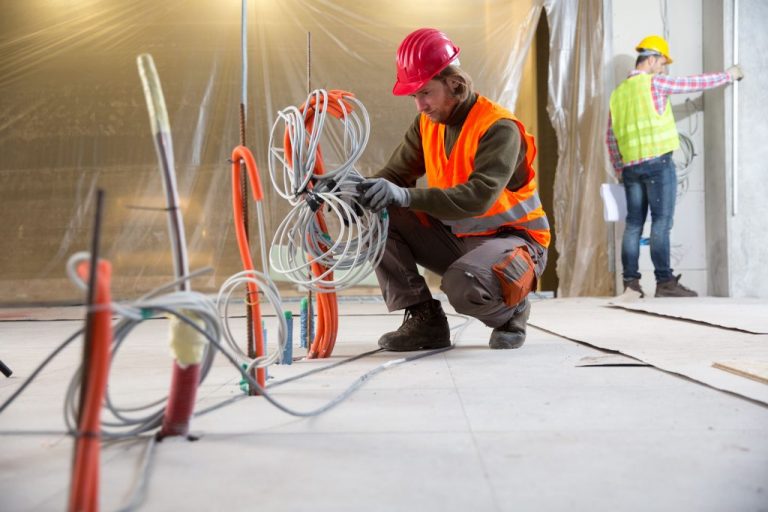Construction contractors take engineering or architectural designs and turn them into reality. Without the construction piece of a private development or public works project, drawings and specifications have little to no value, which is why the construction industry comprises a large portion of the U.S. GDP each year. While the design team provides general direction to the contractor on a project, showing what the end product should look like and the materials needed to achieve this result, the means and methods are typically left to the builder.

How does a construction company qualify for the credit?
There is a four-part test used to determine whether a company has a project that qualifies for the R&D Tax Credit. If you have a project that meets each of the four quadrants below, your project most likely qualifies.
Technological in nature
- Discover information that fundamentally relies upon principles of Hard Sciences (i.e. Physical Sciences, Biological Sciences, Engineering, Computer Science, etc.)
- Not social, economic, or psychological Permitted Purpose
Permitted Purpose
- Develop a new, or improve an existing, product or process
- Related to Functionality, Performance, Reliability, Quality, Significant cost, Savings, etc.
- Not Aesthetics
Eliminate Uncertainty
- Capability
- Uncertain if able to achieve desired result
- Methodolgy
- Uncertain of optimal design or process to achieve project goals
- Goals to show there were issues and potential alternate solutions
Process of Experimentation
- Evaluate and test alternative design or process to identify optimal solutions
- Methods to use
- Prototyping
- Modeling
- Systematic Process of Trial and Error
- Simulation
- Computer Science Testing (Validation, Beta, etc.)
Once a company determines that their project meets these criteria, three expense categories factor into the tax credit calculation:

Wages
- Employees involved in conducting or carrying out qualified research.
- Employees providing supervision of qualified research.
- Employees providing support for qualified research activities.

Supplies
- Resources consumed or used up during the carrying out of qualified research.

Contract Research
- 3rd parties paid to assist in the conducting or carrying out of qualified research.
- Requires the Company to maintain rights to the project (i.e. research performed on behalf of the Company)
- Requires the Company to bear the expense if the research is unsuccessful.
Once a company determines that their project meets these criteria, three expense categories factor into the tax credit calculation

Mechanical Construction Contracting
Where carpenters and steel erectors build the bones of a building, the mechanical contractor builds the respiratory and cardiovascular system. Building mechanical is a key component for virtually every project that involves any level of plumbing, drainage, or HVAC work. This construction specialty lends itself especially well to R&D tax credit qualification due to the number of new mechanical technologies constantly being offered by vendors. A few examples of qualifying activities that a mechanical contracting company might partake in include:
- Developing scale models for a building mechanical system to analyze a new technology being offered by a vendor.
- Building Information Modeling (BIM) to identify potential conflicts (clash detection) before starting construction.
- Creating a new method for estimating material or construction costs.
- Designing a mechanical system to meet LEED or other energy efficiency standards.
- Experimenting with new piping or ductwork materials to optimize for a given criteria, whether it be energy efficiency or cost.
- Evaluating and improving upon a construction method, such as an improved method to support pipe or ductwork.
- Developing new proprietary system to improve the ease or efficiency of a type of installation, such as a new method for installing hot water heaters or furnaces.
One misstep in construction can make the difference between having a successful project and having the project go upside down entirely. Mechanical construction contractors can leverage R&D activities to limit the possibility of the latter while bringing more value to their clients.
General Construction Contracting
The general contractor is typically in charge of leading the construction effort on a project, subcontracting some or all of the project to specialists that focus on one area. Since the general contractor is often contracted directly with the owner, they often take on more construction risk than any of the subcontractors. They’re also often operating on the lowest profit margins of the entire project team which makes it vitally important for them to take advantage of every competitive advantage available. R&D tax credits are one of those competitive advantages. Qualifying activities include, but are not limited to:

- Constructing a mockup of the system or building to be constructed in order to test how it will perform under given conditions.
- Building Information Modeling (BIM) to identify potential conflicts (clash detection) before starting construction.
- Creating a new method for estimating material or construction costs.
- Testing different materials to determine which will be most suitable for the given application.
- Developing a system or method to manage subcontractors, schedule, cost, etc. more efficiently.
While most don’t consider the construction industry a research-intensive profession, projects that meet the four-part test is considered R&D and can used to build a more profitable business. If you’re involved in the construction business as a general contractor, you may be involved in R&D without even knowing it.
We offer comprehensive services to support your business at every stage of growth.
We offer comprehensive services to support your business at every stage of growth.

Electrical Construction Contracting
Electrical contractors are tasked with taking electric power from powerlines in the street to every system within the building that requires electricity. They install transformers to step the power down prior to connecting to a junction box, then route smaller electrical wires throughout the building to the lights, fire detectors, outlets, and other equipment. Similar to building mechanical contractors, many activities that electrical contractors are involved with qualify for the R&D Tax Credit. Some of these activities include:
- Drafting and/or modeling an electrical system in autoCAD or Revit.
- Conducting load studies/modeling to determine whether or not the proposed electrical systems are sufficient to meet electrical demands within the building.
- Building Information Modeling (BIM) to identify potential conflicts (clash detection) before starting construction.
- Creating a new method for estimating material or construction costs.
- Designing an electrical system to meet LEED or other energy efficiency standards.
- Experimenting with new materials to optimize for a given criteria, whether it be energy efficiency or cost.
- Researching and testing different types of solar shingles being offered by green technology vendors.
Claim your R&D Tax Credits Today
Whether you own a small remodeling company, work for a large general contractor, or fall somewhere in between – if your company operates within the construction industry there is a good chance that your projects qualify for R&D Tax Credits. LEAF Specialty Tax Consultants focus exclusively on helping companies like yours take advantage of R&D Tax Credits allowing you to continue to build while maximizing your profitability. If you’d like to begin the conversation and find out more about how we can help your company save money and grow, contact us today!


